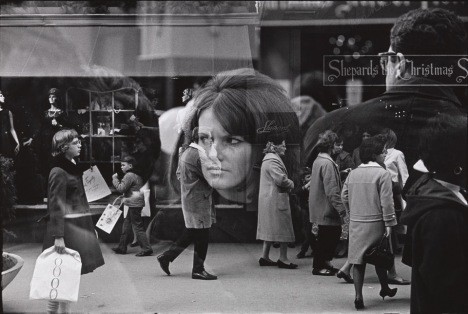Harry Callahan
09 Dec 2013 - 31 May 2014

Harry Callahan
Providence 1966, printed 1990-9
© Estate of Harry Callahan; courtesy of Pace/MacGill Gallery, New York
Providence 1966, printed 1990-9
© Estate of Harry Callahan; courtesy of Pace/MacGill Gallery, New York
From the towering buildings of Chicago and its urban inhabitants to grass and weeds in the snow, Harry Callahan (1912–1999) is regarded as one of the most influential figures in post-war photography, yet his work is little known in the UK.
Callahan disregarded the limits of conventional landscapes to give equal focus to both broad perspectives and individual details. His work is grouped into three themes which he described in 1975 as ‘Nature, Buildings and People’. Linking all three is his wife, Eleanor, whom he met in 1933 and who became his most photographed subject. She appears indoors, within the city landscape, as a lone figure on a beach and emerging from the water as in Eleanor 1949.
Born in 1912, Callahan worked as a clerk for Chrysler before attending a workshop by Ansel Adams in 1941 which encouraged him to pursue photography. Although he lacked formal training, his work demonstrates a sustained interest in line and composition which figures strongly in his studies of nature as well as his cityscapes.
This large display at Tate Modern is representative of Callahan’s long career and include black and white works he printed in the 1960s and 1970s, colour dye transfers from the 1980s and large black-and white prints on aluminium made under his supervision in the 1990s
Callahan disregarded the limits of conventional landscapes to give equal focus to both broad perspectives and individual details. His work is grouped into three themes which he described in 1975 as ‘Nature, Buildings and People’. Linking all three is his wife, Eleanor, whom he met in 1933 and who became his most photographed subject. She appears indoors, within the city landscape, as a lone figure on a beach and emerging from the water as in Eleanor 1949.
Born in 1912, Callahan worked as a clerk for Chrysler before attending a workshop by Ansel Adams in 1941 which encouraged him to pursue photography. Although he lacked formal training, his work demonstrates a sustained interest in line and composition which figures strongly in his studies of nature as well as his cityscapes.
This large display at Tate Modern is representative of Callahan’s long career and include black and white works he printed in the 1960s and 1970s, colour dye transfers from the 1980s and large black-and white prints on aluminium made under his supervision in the 1990s
